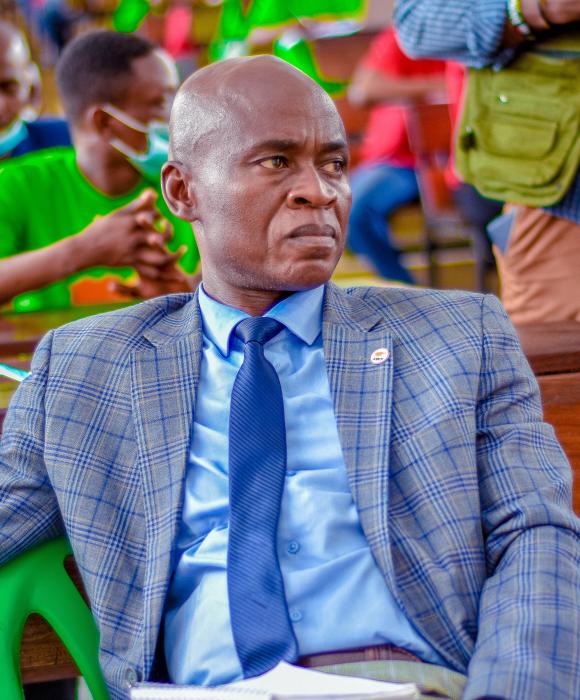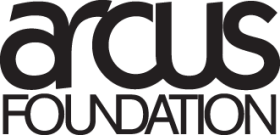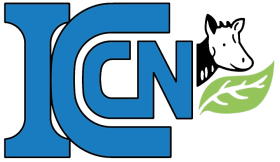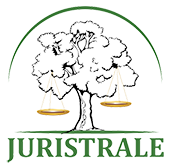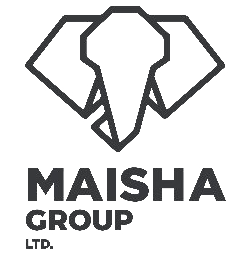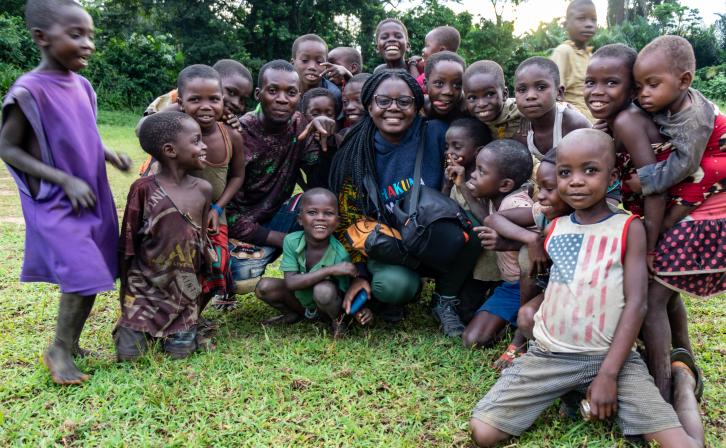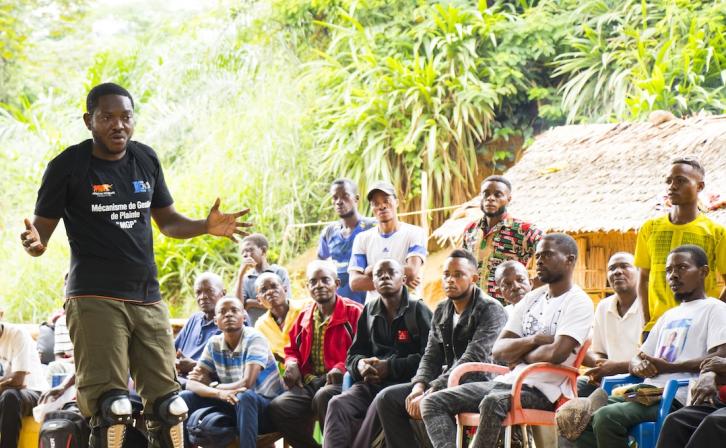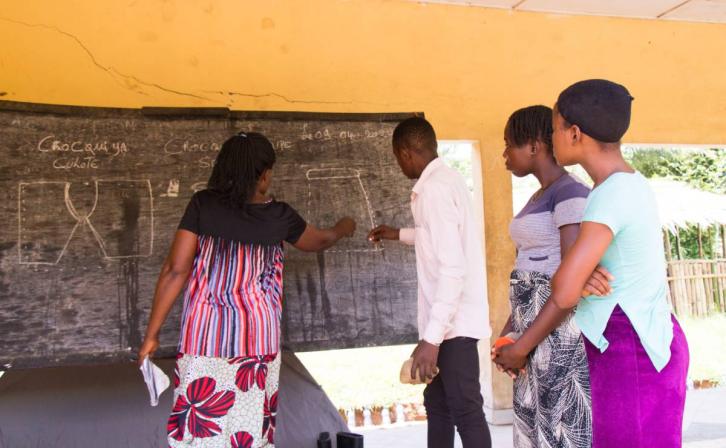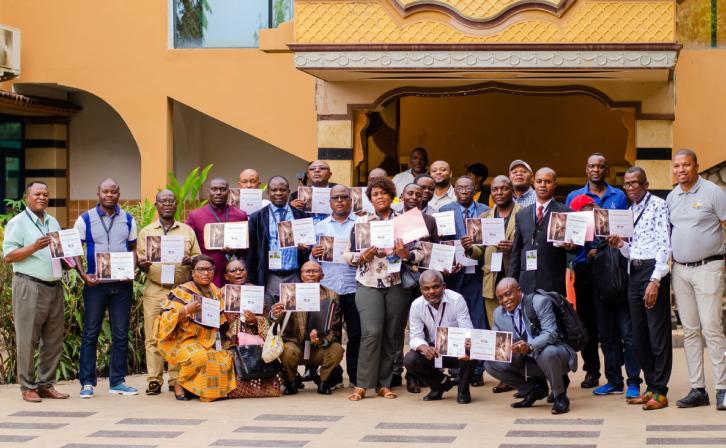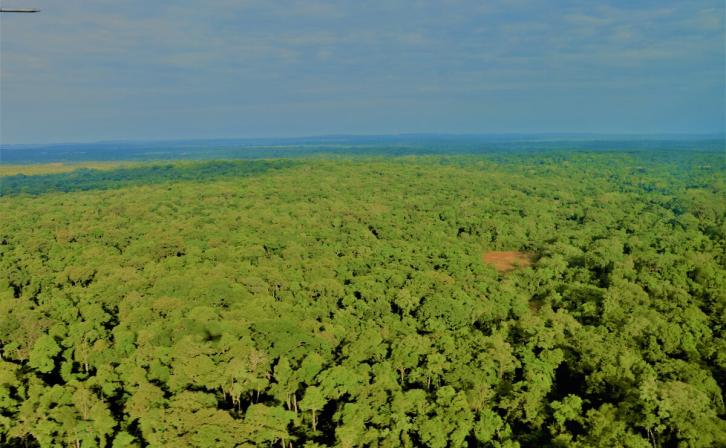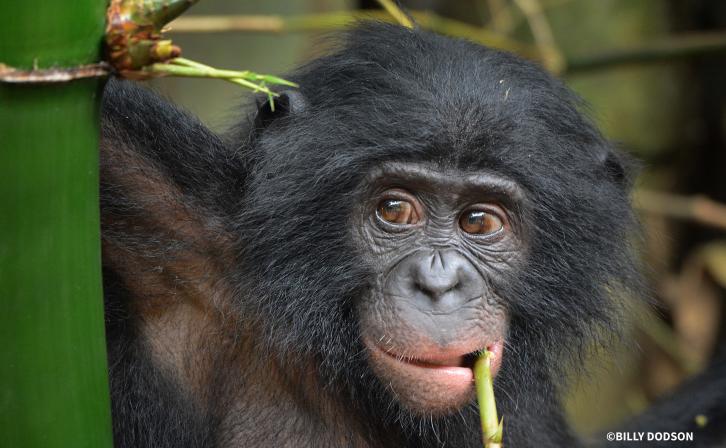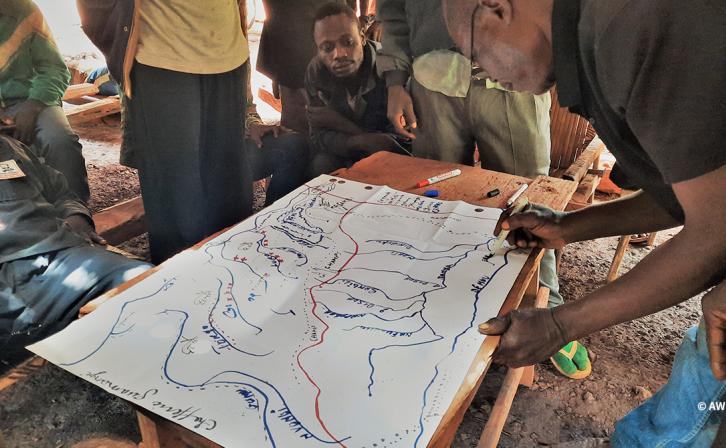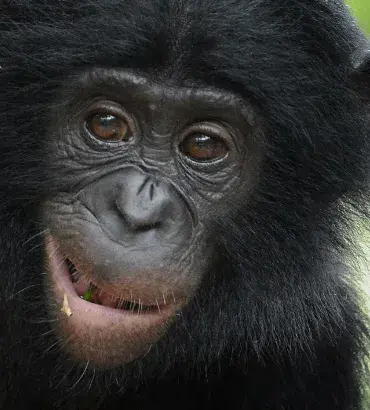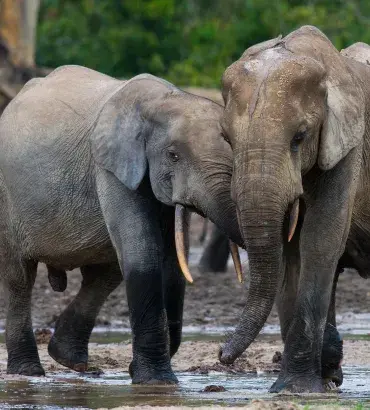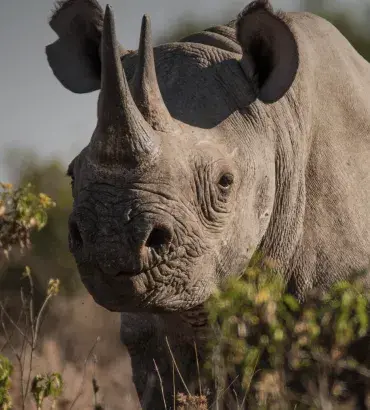Democratic Republic of the Congo
The DRC is one of the most important countries globally for conservation. Here, we partner with the Institut Congolais pour la Conservation de la Nature and the European Union to support communities in improving their livelihoods while curbing threats like poaching, bushmeat hunting, and habitat fragmentation. We are the longest-running "boots on the ground" conservation organization in two critical landscapes, working closely with the government to lay a solid conservation foundation.
We improve community well-being through sustainable livelihood strategies that slow forest degradation and fragmentation. Our activities include:
- Promoting sustainable livelihoods through skills-building and entrepreneurship workshops
- Training in sustainable agriculture and fishing practices
- Supporting anti-poaching law enforcement by strengthening capacity and providing resources, as well as promoting cross-border collaboration
- Developing eco-monitoring systems through training and tools for tracking and spatial analysis
- Infrastructure development in protected areas (operational bases, radio stations, roads, an airport runway, and more)
AWF in Action
Applying GIS Technology for Conservation Decision-Making
Fragmentation and other threats to bonobo populations—forest conversion to agriculture and roads, as well as human encroachment into forests—can be mapped using long-term satellite imagery. Integrated with detailed information from ground surveys, the spatial data acquired enables us to create models that predict and track pressures on the land such as hunting activity.

Conserving the Congo Basin Rainforest to Benefit the Globe
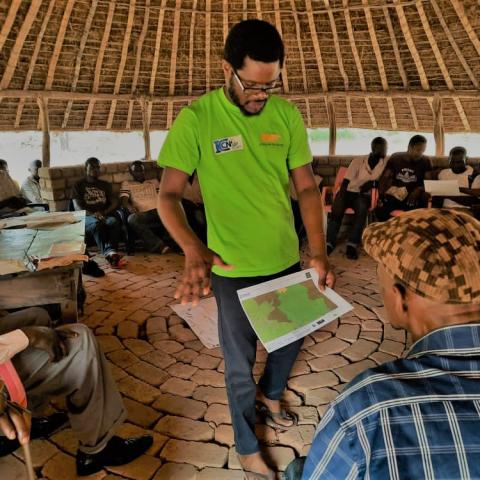
Enterprise
In many cases, poaching, unsustainable harvesting of natural products, and habitat loss from unsustainable forms of agriculture are the result of a lack of other economic options. We work with businesses and communities to diversify and facilitate sustainable income-generating activities. By engaging businesses in the context of our landscape work, we can help improve living conditions for families while reducing human impact on biodiversity.
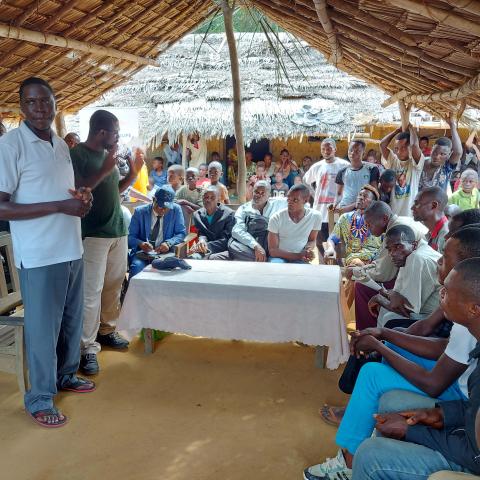
Informing Choices
Our expertise helps local leaders, business owners, and community members make win-win decisions for their community and for wildlife. We organize inclusive local groups with representation from communities, government, NGOs, the private sector, and other local stakeholders to envision a sustainable, prosperous future—then, we develop land-use plans and strategies to get there. These consensus-driven plans consider local livelihoods, habitat, and areas important for ecosystem services like clean water, and the plans are informed by AWF-led resource mapping and spatial analyses. In this way, rights holders are empowered to make decisions about their future and find ways to achieve their aspirations while protecting and restoring nature. We also engage with businesses and advise them on sustainable agriculture and production techniques, as well as profit-increasing strategies.
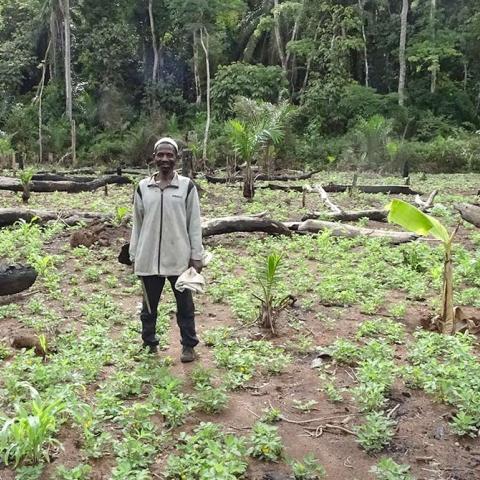
Infrastructure Support
When necessary, we invest to ensure park personnel have access to essentials like operating bases, offices, water supply, electricity, roads, airstrips, and radio systems. This helps protected-area managers respond quickly and efficiently to incursions and other threats to wildlife and habitat.
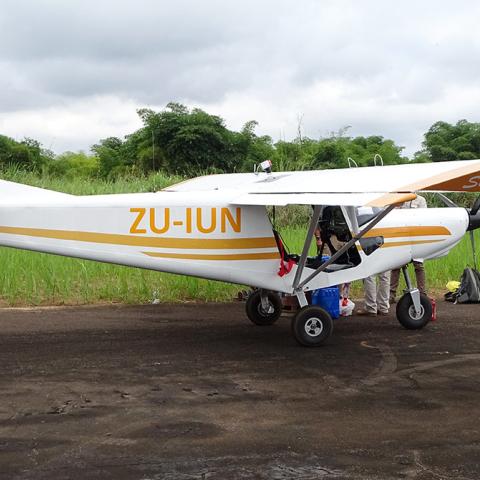
Linking Conservation with Education
Ilima, a remote village in northern DRC, is in a wildlife corridor between two nature reserves. In 2013, with the support of the Nancy and Charles Wall Family Foundation Fund, AWF constructed a primary school for the village in exchange for conservation commitments from the community. Since opening in 2015, Madina Conservation School has educated 1,400 children in grades 1-6. Students learn why it is important to protect their environment, and they bring this knowledge home, contributing to a community-wide understanding of conservation. Explore how Madina students in the 2023-2024 school year see nature.
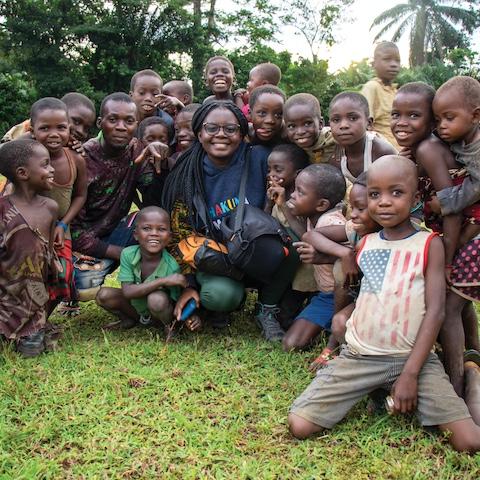
Negotiating Space for Wildlife
In approaching landscape-level conservation, we identify targets ranging from the number of endangered species in a landscape to the presence of ecosystem services like clean water. How those targets are distributed guides how the landscape is divided into functional zones—with solutions shaped by communities and other stakeholders through collaborative planning. Locally-led solutions are key to stabilizing and increasing wildlife populations in the long term.
Using data from patrols, ecological monitoring, remote sensing, and satellite imagery, we develop land-use models and apply geographic information systems (GIS) to help local people make sustainable decisions about how to use the land, from conservation planning to development choices. This way, communities reap the rewards of nature without overexploiting it, and both people and wildlife have the space they need to thrive.
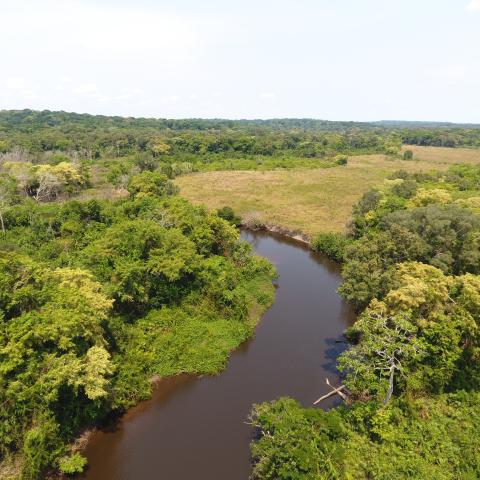
Ramping Up Anti-Poaching and Wildlife Law Enforcement
We help keep eyes on the forest, assisting with ranger recruitment and training while providing financial and technical support for patrols. In Bili-Uele, we helped the Institut Congolais pour la Conservation de la Nature (which acts as the country’s wildlife authority) create a rapid-response anti-poaching team of 42 eco-guards.
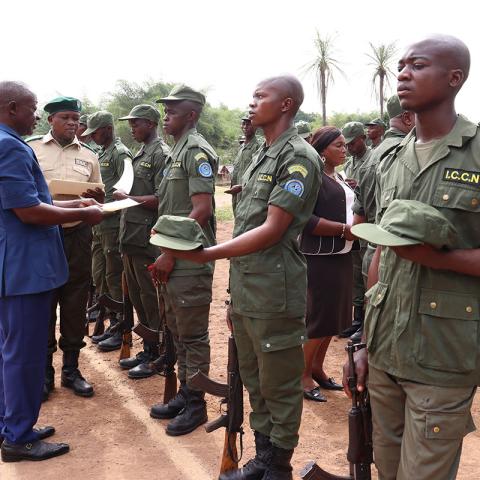
Reducing Unsustainable Agriculture Practices in Bili-Uele
Slash-and-burn agriculture is one of the greatest threats facing this landscape. Starting in 2021, we began a program to sensitize local communities to the benefits of farming sustainability. Farmers are reporting higher yields and a better understanding of why protecting biodiversity is important to their everyday lives.
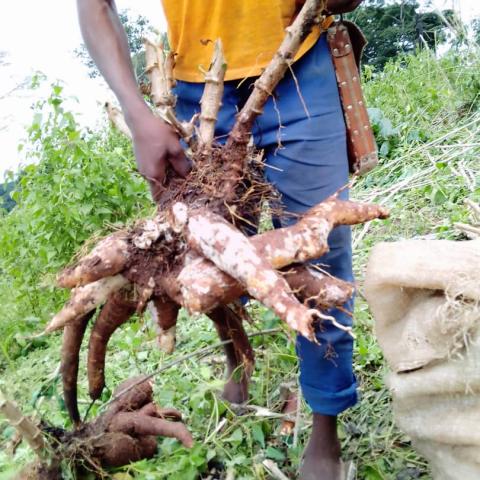
We work with the people of Democratic Republic of Congo for wildlife. Our strategic, implementing, and funding partners include:
See More of Our Work
Wildlife We Are Protecting
By the Numbers
41,000 Number of hectares protected and/or with improved conservation status due to AWF interventions beginning in 2016
13,979 Number of people benefiting from AWF's conservation efforts
3 of 3 Wildlife populations supported by AWF that are stable/increasing
